Elevating design: Insights from Adobe Design Summit 2025
How we’re improving design at Adobe through quality, collaboration, and process

All photography by Myleen Hollero
At this year's Adobe Design Summit, our annual celebration of all things design at Adobe, we brought together our global, distributed design community and partners to highlight the creativity that shapes our products. This year’s theme, Elevate, focused on how we can improve quality, grow our skills, and support one another to shape the future of Adobe experiences.
Check out the standout ideas, insights, and inspirations from Design Summit 2025 to see how Adobe's design team is leveling up quality, teamwork, and the way we build what’s next.
The future doesn’t just happen… it’s designed
In a wide-ranging conversation with Eric Snowden, SVP of Design, Adobe Chair & CEO Shantanu Narayen shared a powerful perspective: Quality isn’t just about polish or performance, it’s an act of leadership rooted in storytelling, clarity of purpose, and shared ambition. By “setting the vision for something and aligning teams to build it,” we don’t just ship features, we move with purpose to shape what’s next.

As a final call to designers and leaders, he emphasized that our goal isn’t to build faster, but to build better—with unreasonable expectations, bold imagination, and the courage to prototype the future.
Great design creates clarity
Alan Wilson (Principal Designer, Experience Cloud) showed how thoughtful information architecture brings clarity to chaos, aligns teams, and elevates user experiences. He emphasized that, when backed by a solid process, it also shapes how teams think, work, and build together—which he called “the secret sauce behind great design.”
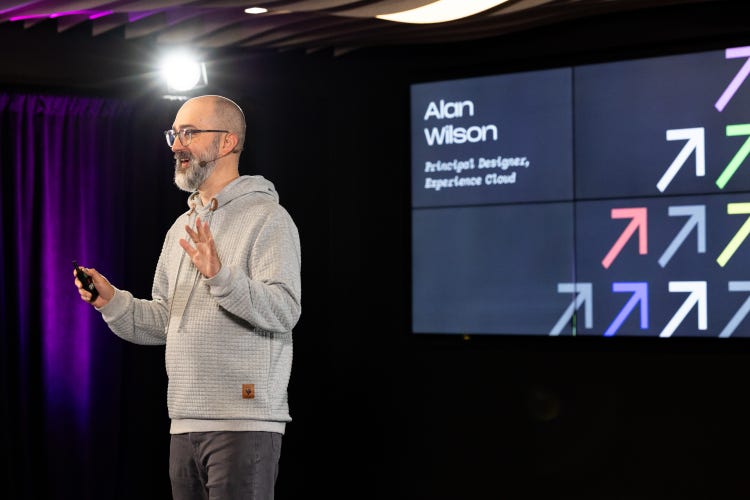
It’s a process that keeps key artifacts (like object maps, diagrams, and content strategies) relevant, ensures the information architecture evolves with the product, and strengthens collaboration across teams. In short, it’s essential for scaling quality.
Creativity is a team sport
Alicia Mooty (Director of Design Operations) brought a bit of Pixar magic to Design Summit, sharing lessons from an open culture where creativity and collaboration go hand in hand. Her core message: Creativity is a deeply intentional team sport fueled by play, candor, iteration, process, and shared ownership. Playful spaces spark spontaneous collaboration. Honest feedback is welcome because great ideas can come from anywhere. Rough drafts should be shared early and often to build trust and accelerate iteration. And celebrating shared success fosters pride and ownership.
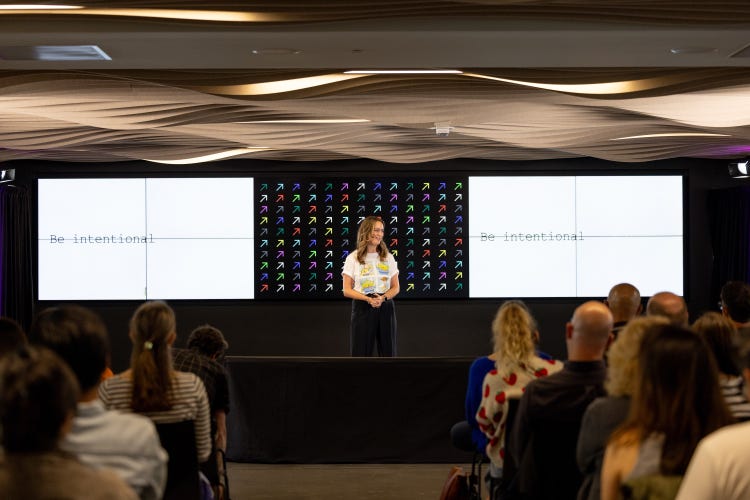
As Alicia reminded us, “Process reinforces culture.” It’s not just a way to get things done, but a way to work together, to support one another, and to build a culture that sustains creativity over time. Her talk was a joyful reminder that “creativity is a team sport” that thrives where fun, feedback, and shared purpose meet.
Craft is putting intention and care into every micro decision
Katie Dill (Head of Design at Stripe) explored what it really means to build quality into design—especially at scale. It isn’t just about functionality, but about craft, care, and creating something that resonates emotionally. She defined quality in three parts: power (does it work?), craft (is it polished and consistent?), and beauty (does it spark joy?).
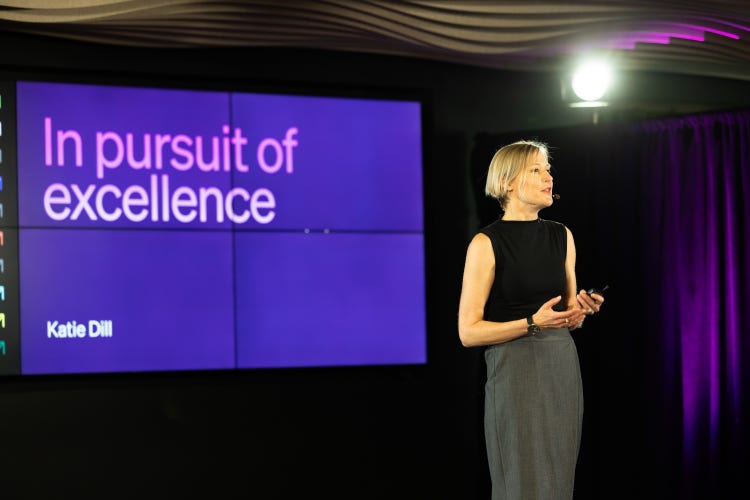
Quality isn’t a luxury, it’s a responsibility, and it’s what makes design meaningful. As she put it, “Beauty is not just about being attractive, it’s about joy, personality, and soul.” Getting there isn’t always easy, but it’s worth it because quality builds trust, drives growth, and gives teams a sense of pride and purpose.
When in doubt, help people connect
Katie Wilson (Staff Experience Designer, Spectrum) and Amy Adkins (Senior Staff Content Strategist, Spectrum) shared their journey of weaving AI into Adobe’s design DNA. When every artistic and programming choice can lead to new and unexpected outcomes, collaboration and rigor are necessary. But collaboration isn’t always easy.
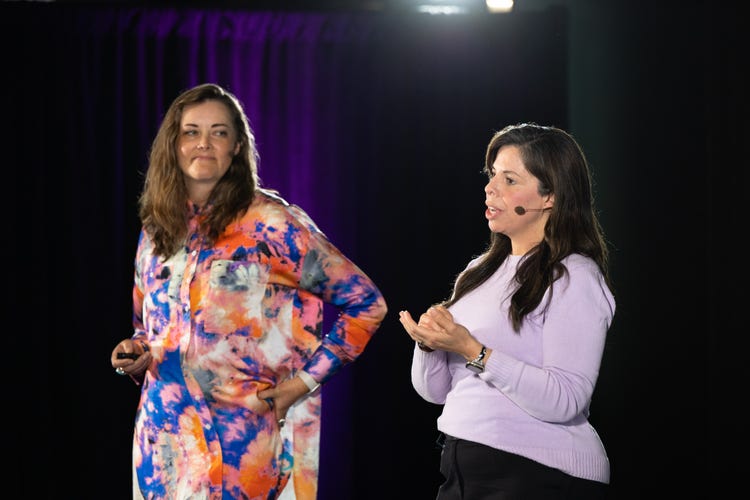
Obstacles like silos, where multiple teams are focused on different goals and unique user needs, can be barriers to fostering alignment and building trust. They likened the collaborative process to playing Minecraft in survival mode: navigating ambiguity, scarce resources, and high stakes with creativity and determination. At the heart of Katie and Amy’s story is a powerful mantra of “relentless collaboration,” and the power of building trust, transparency, and consistency through showing up, documenting, and inviting people into the process—and especially in a space as fast-moving and high-stakes as generative AI.
Don’t chase the future, shape it
In her talk, Ann Rich (Senior Director of Design, Cross Cloud Platforms & Product) discussed how design organizations can navigate rapid change through strategic foresight, “a structured approach to spotting signals, imagining possibilities, and making better decisions together.” With teams often working under different assumptions and mental models, fast-paced growth can cause confusion and misalignment. Strategic foresight helps create a shared understanding, enabling clearer, more confident decisions.

She introduced its four core actions—notice, connect, imagine, and share—and showed how they’re already embedded in design practice in creating visions, researching user needs, and testing interactions. These frameworks empower teams not just to react to change, but to shape it with intention.
Think about what AI can do and about what you want to make with it
In a lively conversation between Laura Herman (Senior Research Manager, Adobe Firefly) and artist Sofia Crespo, Sofia shared how generative AI has become a key part of her art. Her work evolved from early experiments with neural networks like Style Transfer (an algorithm that extracts "style" from one image and "content" from another to generate a new one) to building custom datasets and training her own models.
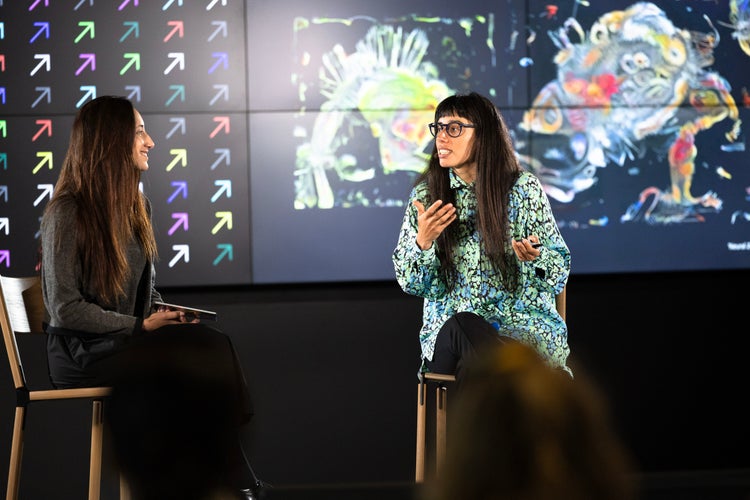
She sees AI as a collaborator with unpredictable outcomes and emphasizes the importance of not only knowing what you want to create, but also embracing the “weirdness” of AI-generated art. She highlights that output depends heavily on datasets and their structure, saying, “The data is a big part of the thing. It’s not just about the tool—there’s artistry in shaping the data.” She recommends that artists understand both AI’s limitations and its potential to better harness it in support of their creative vision.
Sensory design grounds us
Amanda Fetterly (Director of Content Design, Adobe Express) opened her talk by immersing the audience in a sensory experience that highlighted how sound shapes focus, perception, and emotional connection. She reflected on Adobe Express’s five-year evolution, from static design elements to rich multimedia experience, culminating in partnerships to license commercial music and a library of over one million tracks exclusive to Adobe Express and TikTok.
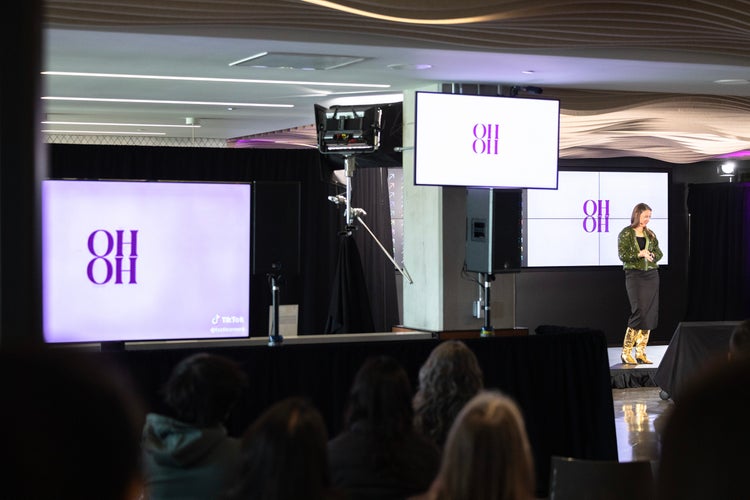
Amanda emphasized the power of sensory design to create experiences that are not just functional, but emotionally resonant and deeply human. She called on designers to engage more fully with the world around them, to design with presence, empathy, and intention, and to “look around the corner with your senses... touch something, sit on something, talk to someone.”
Accessibility is a catalyst for innovation
Dr. Dee Miller (Director of Product Strategy & Insights, Product Equity) delivered a compelling message: Making products accessible isn’t just about compliance, it’s a strategic investment that unlocks creativity, fuels growth, builds equity, and drives innovation. It should be a core part of design, not an afterthought.
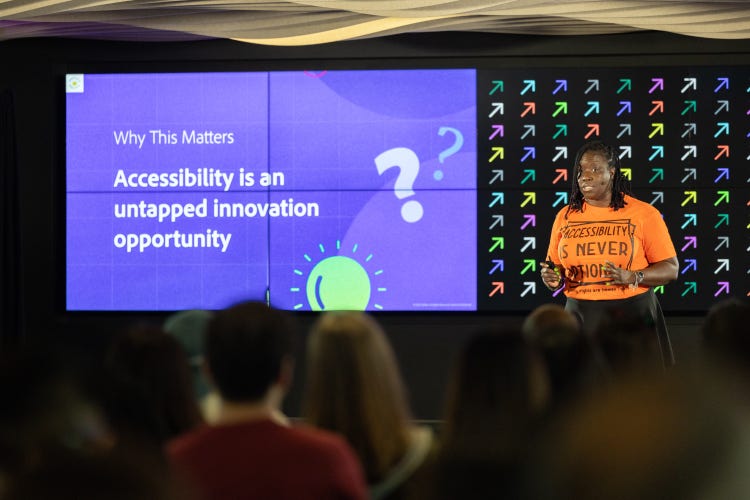
“Accessibility is not about implementation, but about unlocking possibility,” she said, highlighting how everyday tools like keyboards, audiobooks, and voice assistants began as assistive technologies but now benefit everyone. While urging teams to embed accessible and inclusive thinking as a part of the product development process, she stressed that accessibility is a shared design responsibility that builds trust, fosters belonging, and ensures that products serve all users—especially those who rely on them most.
These conversations sparked at Adobe Design Summit will continue to shape how we design, lead, and elevate experiences across Adobe.